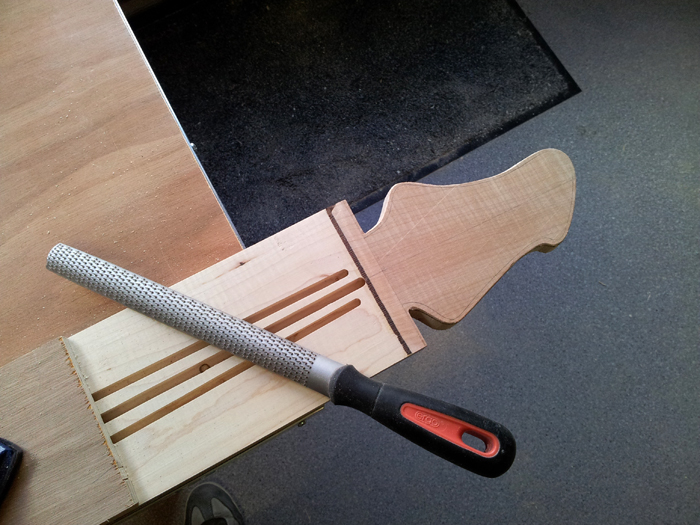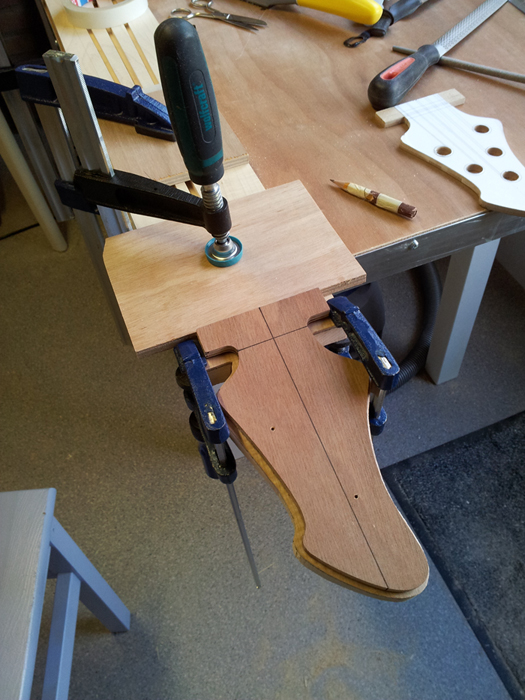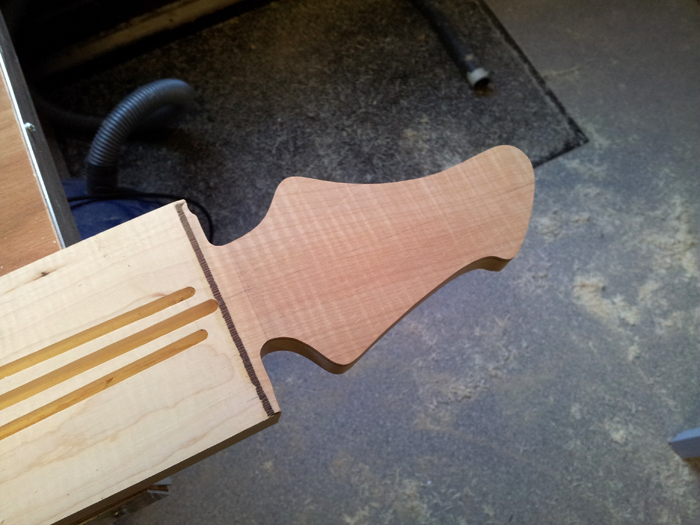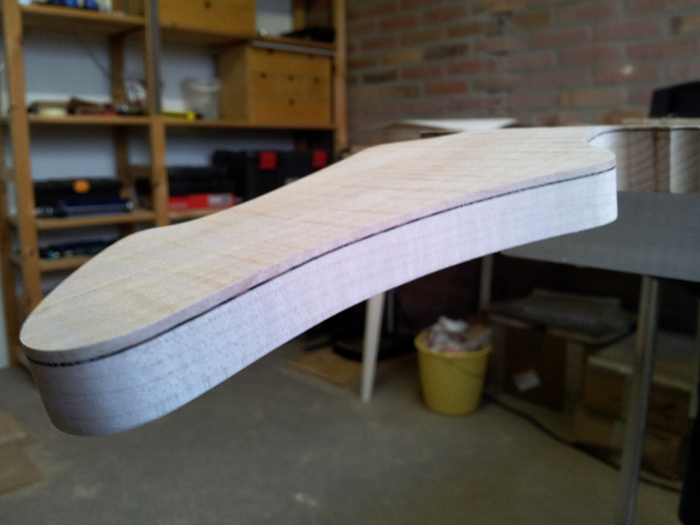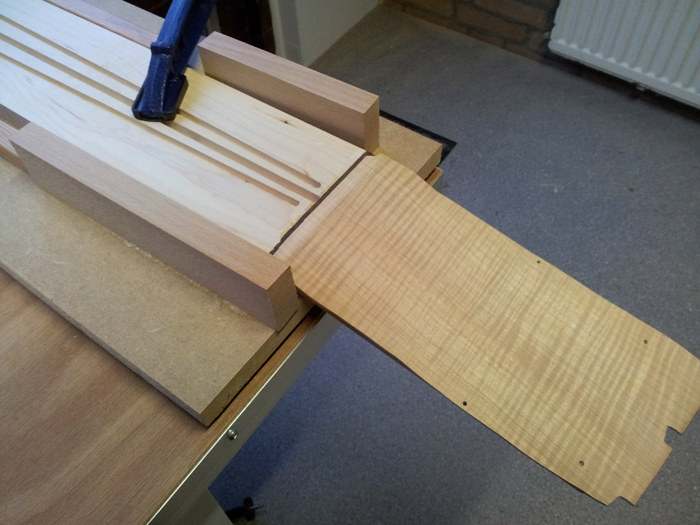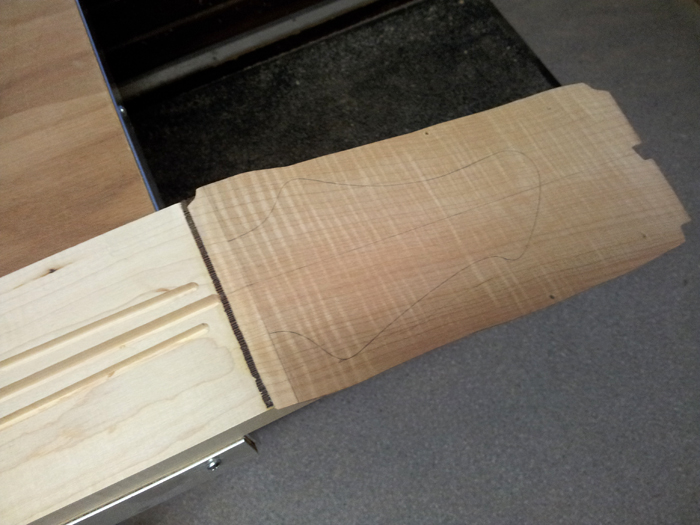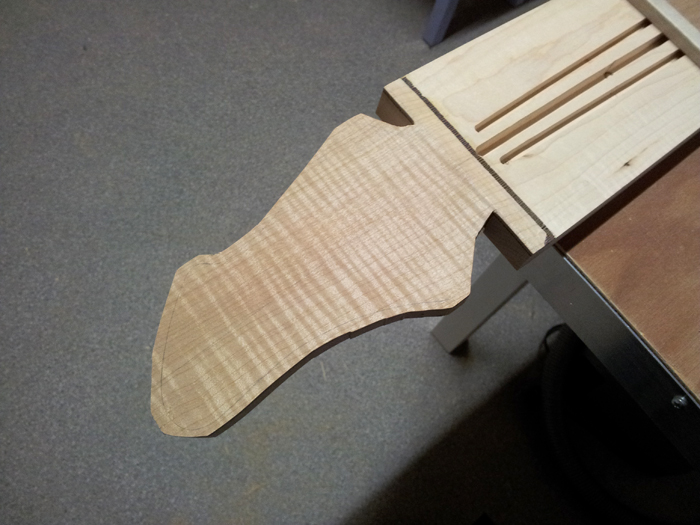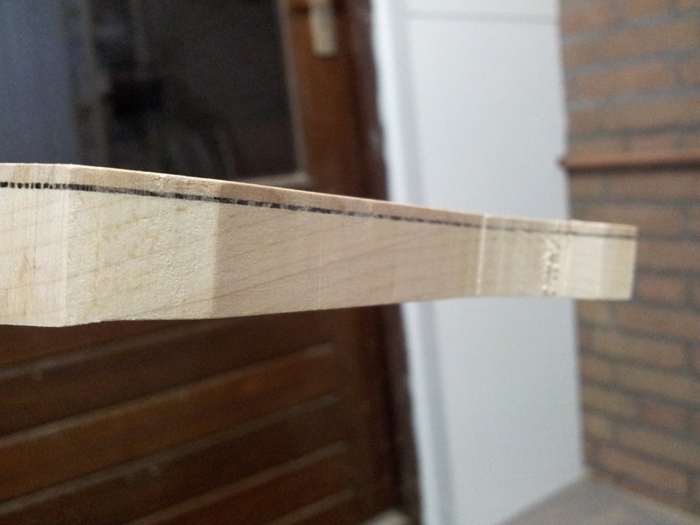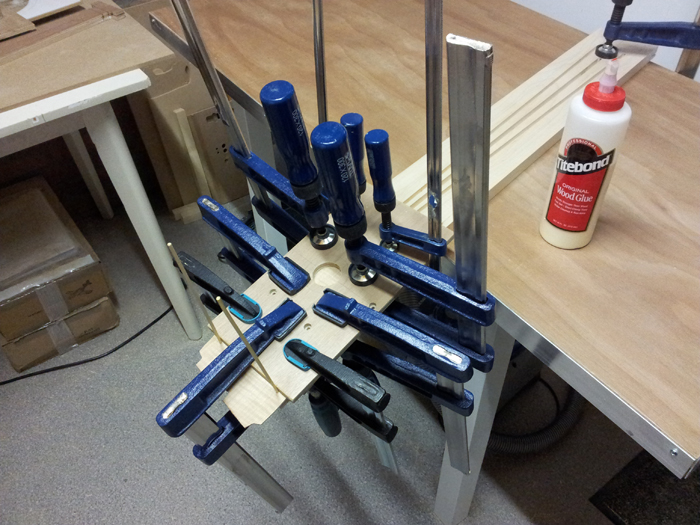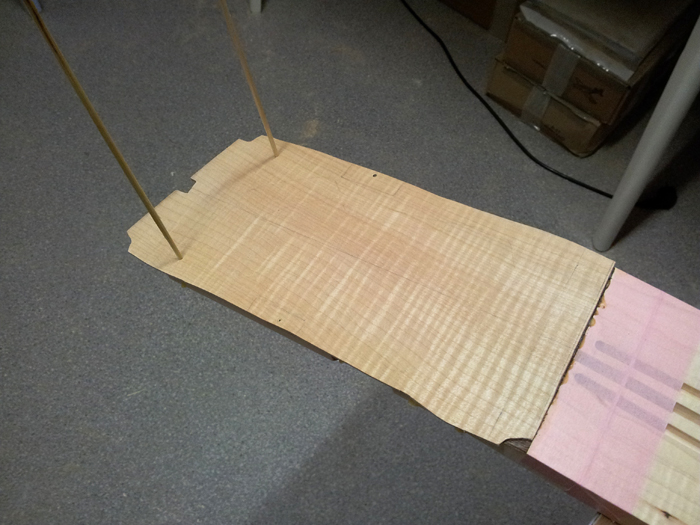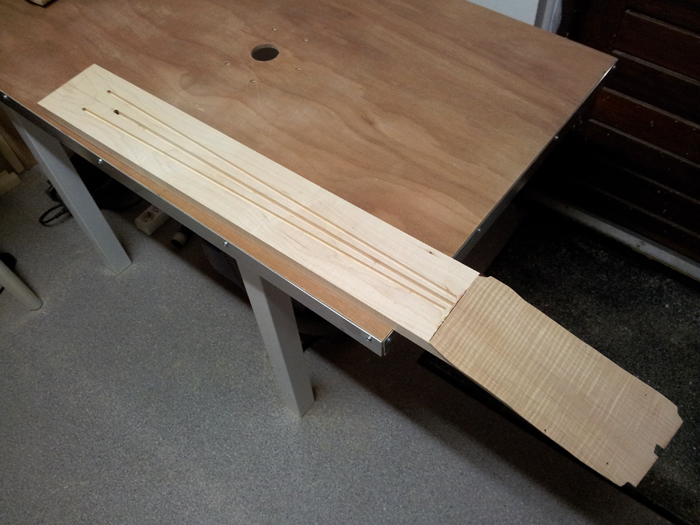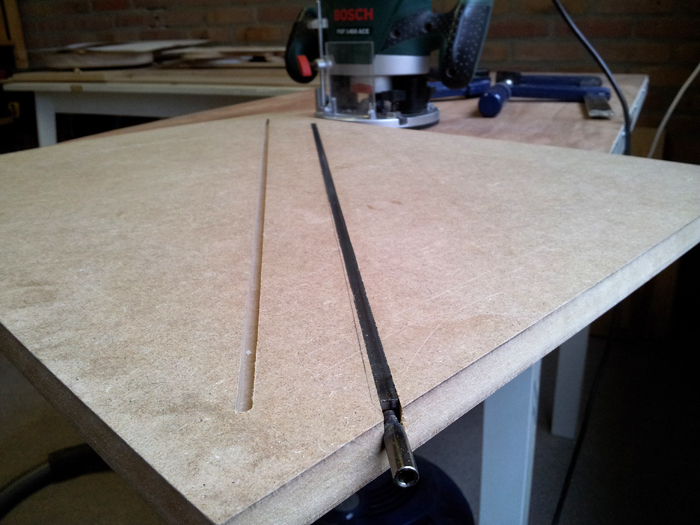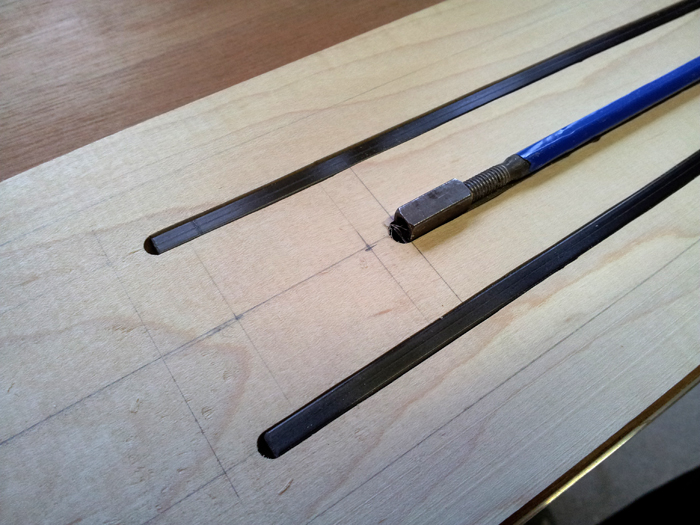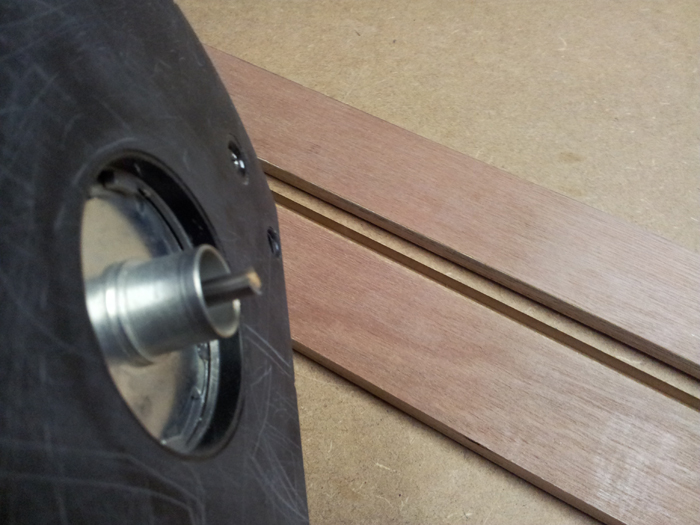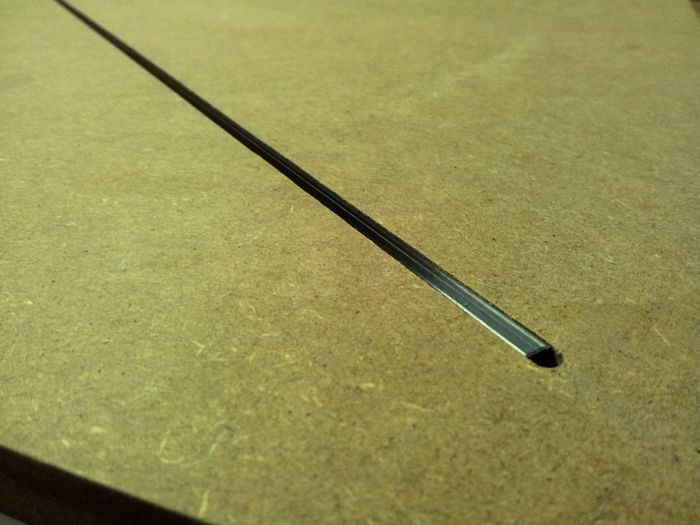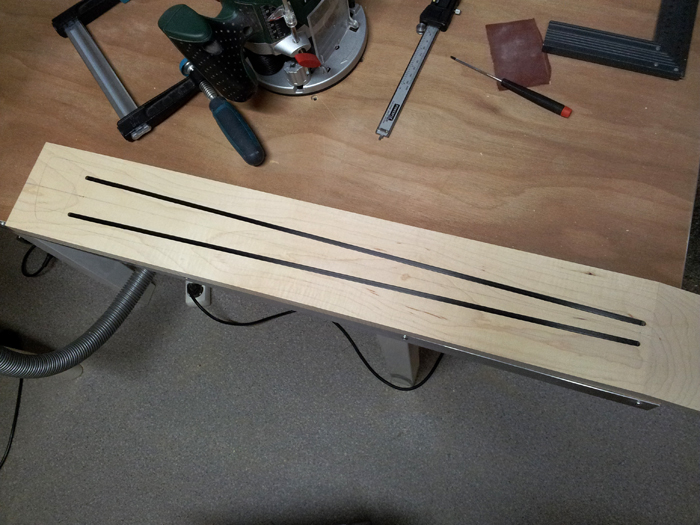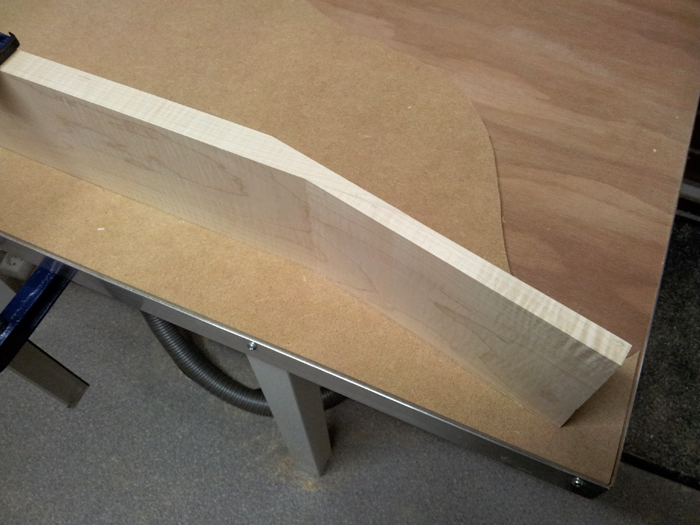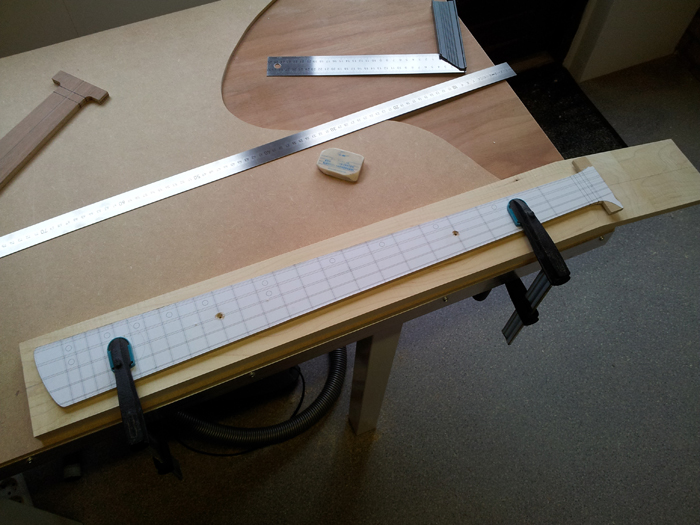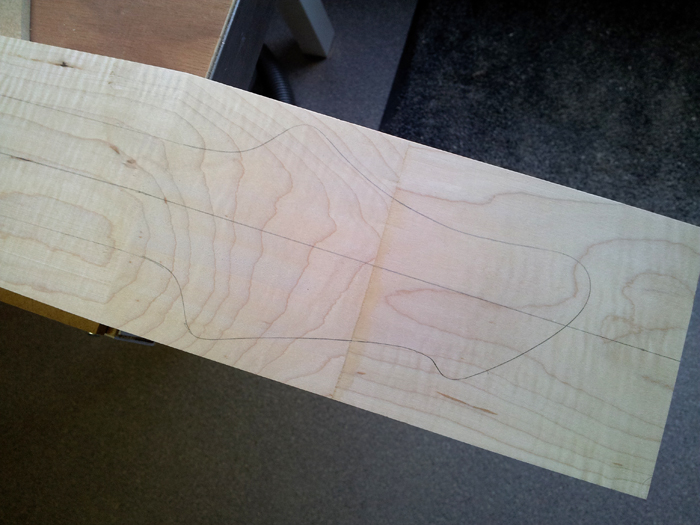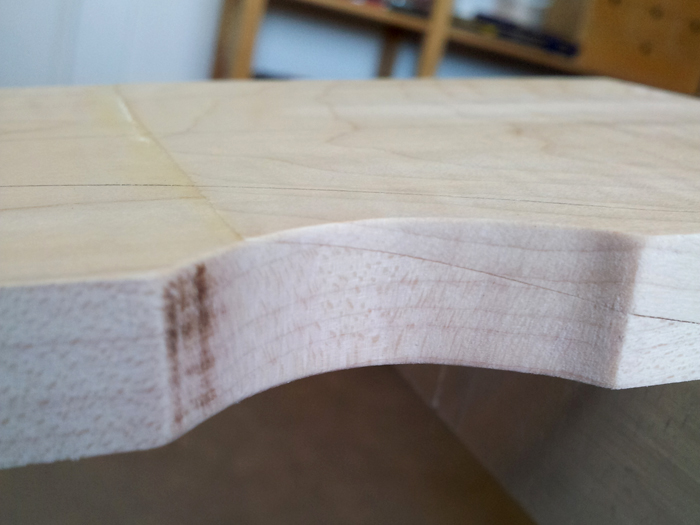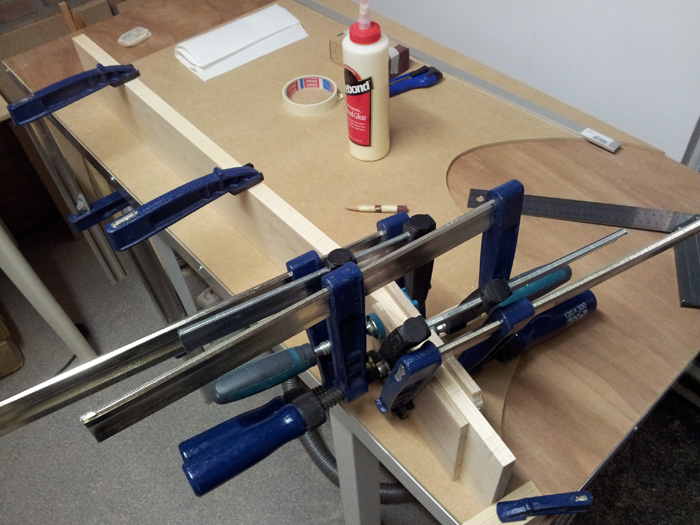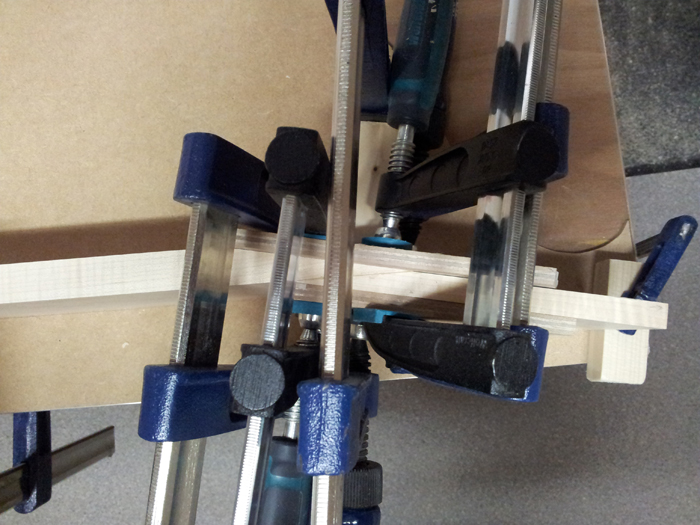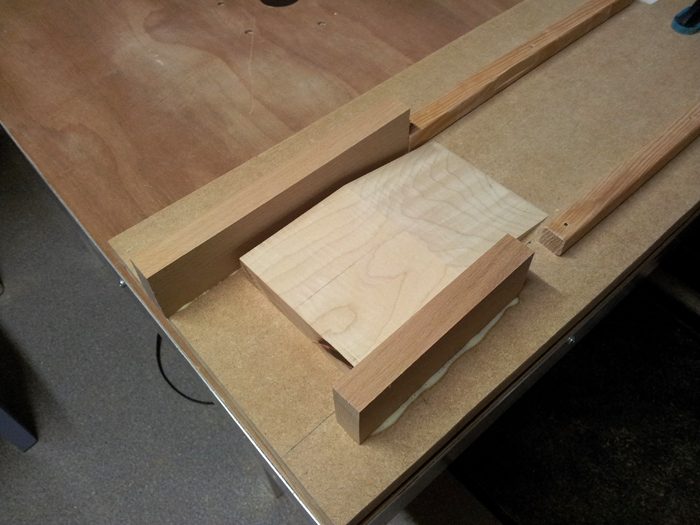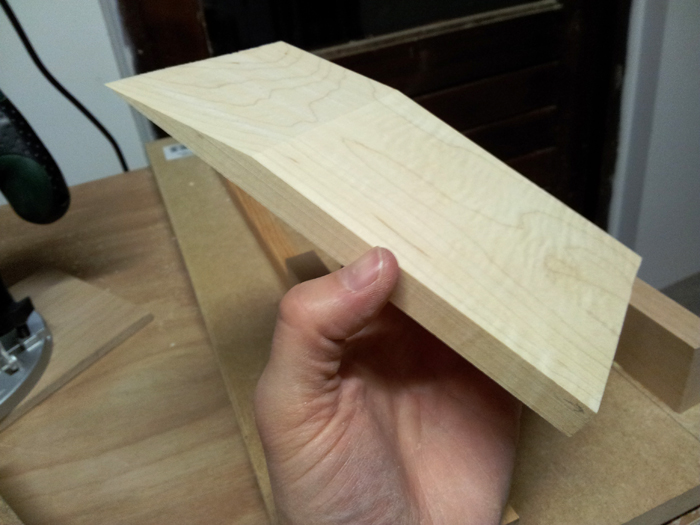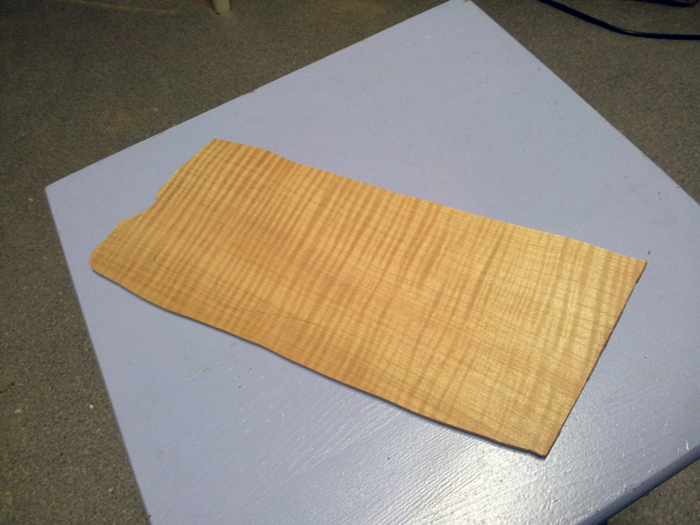Proceeding with the headstock, I shaped it roughly with a rasp, bringing it closer to the intended outline:
aligned the template and taped it to the headstock:
and routed it to it’s final shape. Say hello to Mr. Headstock:
And a note to everyone who wants to do it this way: don’t! The headstock is way too small to be a good base for the router. I pulled it off somehow, but it wasn’t a huge success. I had one tip over that I managed to fix and some minor tear out that I’m working on right now. It’ll be okay in the end, but on my first bass I shaped it entirely by hand and that was a much more satisfying and controlled way of coping with this task. On my next bass or guitar, I’ll either do it by hand again or find a better way to machine it.
Lastly, a not so sharp but cool close up:

